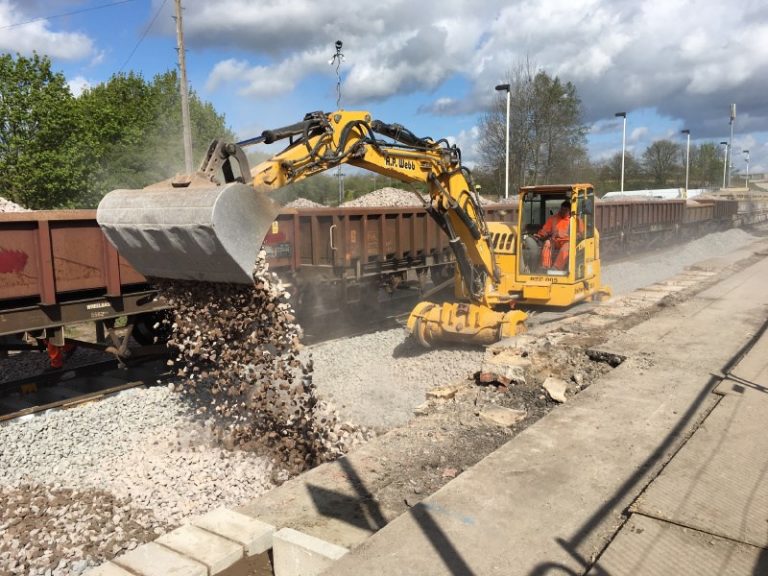The British Transport Police (BTP) looks after Britain’s rail network including the London Underground, Docklands Light Railway, Midland Metro tram system, Croydon Tramlink, Sunderland Metro and the Glasgow Subway.
Modern technology and traditional visible policing reassure staff and passengers and have led to an overall reduction in crime of 34 per cent over the past decade. This enviable result has been achieved by 3,069 police officers covering a beat 1,000 miles long and looking after nine million people who are almost all on the move each day.
The history of railway policing is dramatic, reflecting the social discord of the times but also testifying to the pioneering spirit of a constabulary making full use of innovation, new technologies and skills.
Police Establishment
Sir Robert Peel may have grabbed the headlines with his creation of the Metropolitan Police in 1829, however the railway police came into force soon after. In November 1830, the Liverpool and Manchester Railway (LMR) set up a ‘Police Establishment.’ A year later the LMR authorised a pay rise for the railway police.
These forerunners of the BTP had to cope with widespread lawlessness on railway construction sites, often descending into armed battles between English and Irish navigators. Order was often only restored with the boisterous assistance of nearby infantry regiments. Happily relations with track workers are much more circumspect nowadays.
Safety was always central to the role of the police right from the start. Watches, flags and lamps were issued to each constable and the Ulster Railway Police were equipped with a shovel and a wheelbarrow to help remove obstructions from the line. Today all officers are PTS passed and fully trained in railway safety.
The railway was quickly taken advantage of by hard-nosed criminals. Railway police however were often one step ahead, making full use of new technology. On 1st January 1845 a railway police sergeant, William Williams, arrested John Tawell for the murder of his lover, Sarah Hart.
Tawell had poisoned the girl and fled by train from Slough to London. An eyewitness told the station master what had happened. The man promptly telegraphed the railway police at Paddington. Sergeant Williams set off in pursuit. Tawell was subsequently convicted and hanged.
Fare evasion
Following the 1856 County Police Act local police forces became better organised. On the railways some companies kept their police, others tried to do without. Crime remained a problem, particularly fare evasion, and the wisdom of having a special police force was generally accepted.
From 1900 several railway companies reorganised their police forces. The London, Brighton and South Coast Railway virtually reformed their force from scratch, followed by the Great Eastern, the North Eastern and Midland in 1910, Caledonian in 1917 and the Great Western Railway in 1918. As with almost all county and borough forces these reorganised forces were headed by ex-army officers.
The First World War put great strain on railway policing. Almost half the officers on some forces joined up. The staff shortage was made up by special constables and women officers. The Great Eastern Railway Police recruited women as special constables, one of the first police forces to do so.
After the war came the amalgamation of Britain’s 100 railway companies into the Big Four: Great Western Railway, London and North Eastern Railway, London, Midland and Scottish and the Southern Railway.
The companies were largely divided along geographical lines. Twenty railway police forces were absorbed into the new companies. Each force was controlled by a chief of police. During the Second World War the railway police were armed and their numbers increased. Women officers were back and stayed on.
Often unreported was the high level of crime during the black out, largely because of food rationing or bombing. Vast numbers of goods were carried by rail and were easy targets for thieves. Police also had to cope with the air raids and direct hits on stations and railways.
British Transport Commission Police
After the war the railway was nationalised in 1947. The railway police forces were merged into one as the British Transport Commission Police in 1949. The London Transport force joined in 1960. Pay parity with civil police was only achieved in 1957.
Shortly afterwards the Maxwell- Johnson enquiry found that policing the railways could not be done effectively by civil forces and that it was essential that a specialist police force was retained.
Certainly some of the stories ex- officers relate are, literally, hair raising and could only have been handled by experienced railway police. In his book, ‘Railway Copper,’ Bill Perkins – who served from 1951 till 1984 – recalls a man sticking his head out of a train and being hit by a locomotive coming the other way.
The man staggered down Barking Station blood pouring from his head. The man was bundled into an ambulance. No one expected him to live and Perkins arranged for the engine to be intercepted and inspected in anticipation of an inquest.
Then the hospital phoned up and said if the top of the man’s scalp could be found they could sew it back on. BTP at Fenchurch Street clambered around the loco and found the article. Officers sped round to the hospital in a car. The man lived to tell the tale and resume normal life.
Football hooliganism
The 1970s and 80s were plagued by football hooliganism. Rival fans fighting pitched battle on railway stations. International terrorism remains a clear and present danger. However, the BTP is better equipped than ever before. At privatisation the fate of the BTP was again a subject for heated discussion. However, the force continues and is now funded by the industry itself rather than the tax payer.
The presence of a BTP officer on a station remains an enduring testimony to a railway that is safe and comfortable. Few recognise the hard work that goes in to policing Britain’s railways or the debt owed to former officers over a span of 180 years.
What does the BTP do?
BTP’s mission is for all of the 8.6 million people who use the rail network each day to get home safely.
It was the first force in Britain to use a computer to record crime, pioneered the use of police dogs to hunt down criminals and was one of the first to recruit female officers.
BTP officers are recruited and trained in the same way as local police officers and deal with everything from bye-laws to murder.
Much like any other force, BTP is subject to checks and balances and has professional standards departments subject to HMI inspections.
There are three main BTP officer roles: police constables (PC), the officers you’re most likely to see at stations and on trains; special constables, members of the public who volunteer to work as PCs; and police community support officers, members of police staff who patrol the railway alongside police officers.
Although it is a British national police force, BTP has taken part in operations abroad. In June, 2016, it took part in Operation Novella to accompany thousands of football fans to France for the UEFA Euro 2016 Championship. It was the only police force to have extended jurisdiction on the French railways.
Dealing with disaster
In 1989, an inquiry by Sir Anthony Hidden QC massively influenced how BTP deals with major incidents. The investigation looked into the Clapham Junction rail crash – a three-train collision which claimed the lives of 35 people.
The emergency incident training given to BTP officers up and down the country was born out of the Clapham tragedy. Serious rail accidents at Southall (1997), Potters Bar (2002) and Grayrigg (2007) saw BTP put into practice specialist techniques honed to deal with fatal incidents on the railway.
The London bombings in 2005 saw BTP’s London officers facing their toughest terrorism challenge. The actions of the 7/7 suicide bombers killed 52 people – many of whom were travelling on the London Underground near Edgware Road, King’s Cross and Aldgate.
Events in 2005 forever changed how BTP officers approached disaster scenes and more importantly the methods they use to prevent similar incidents from happening.
Stop searches were immediately stepped up. A community engagement programme was put in place. BTP’s Special Branch began to work closely with regional counter terrorism units.
Officers began to receive training to help spot suspicious behaviour in crowds. The object is to identify a potential suicide bomber by monitoring his or her actions.
When an explosive device was left on a Jubilee line train in October 2016, BTP’s specialist response unit, which responds to reports of unattended items on the railway, was among the first on the scene. In the following March, BTP played a critical role in London’s response after a vehicle was driven into pedestrians on Westminster Bridge, killing four and injuring 50.
Victim Identification Unit
Some BTP officers are part of the UK National Disaster Victim Identification Unit (DVI), which works with police services, government departments, local authorities and other agencies to respond to mass fatality incidents in the UK.
This team are called upon when there are multiple individuals who have died as a result of a single incident. They recover the bodies in a dignified manner whilst preserving the forensic aspects of the investigation. The second part of the process is to assist the coroner in establishing the identity of those persons.
In 2017, BTP’s DVI team was deployed to the Croydon Tram Crash; the Manchester Arena terrorist incident; London Bridge terrorist incident and the Grenfell Tower fire.
Dogs
Even dogs play a part in policing the railway. Dogs are paired with handlers who train and work with them – some are general purpose dogs and others are specially trained in searching people for explosives.
In response to the changing terrorist threat, they have been further trained so that they can work alongside firearms officers to locate and deal with a suspect.
Metal theft
Metal and cable theft has grown and with it the number of delays on the network and the replacement cost to Network Rail. It’s a problem so extensive that a joint operation between BTP, the UK Border Agency, the serious organised crime unit at Network Rail and BTP was launched to gather vital intelligence to combat metal theft.
However, thousands of pounds worth of stolen cable has been recovered by BTP and in July 2016 two men who conspired to steal large quantities of railway cable were handed suspended prison sentences.
The pair stole almost 8.5 tonnes of cable in three months, which was sold on for thousands of pounds. Their conviction followed a three-month investigation by British Transport Police, initiated after suspicions were raised when one of the men received a fixed penalty notice for driving a truck with an overweight load.
More passengers, more crime
A growing number of passengers presents BTP with a growing challenge. The BTP may be just like any other force in terms of legal status, power and technology. However it remains an integral part of the railway industry and most people on the railway remain proud and staunch supporters of their police force.
This article was written by Marc Johnson and Andy Milne, originally published in 2012 it has been updated and republished in 2017.







































